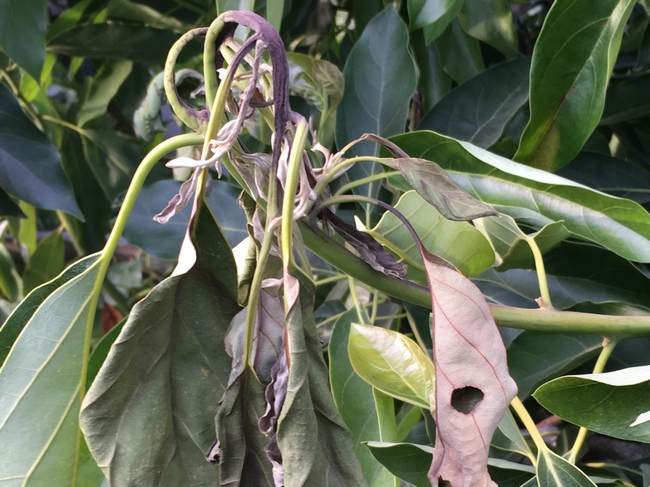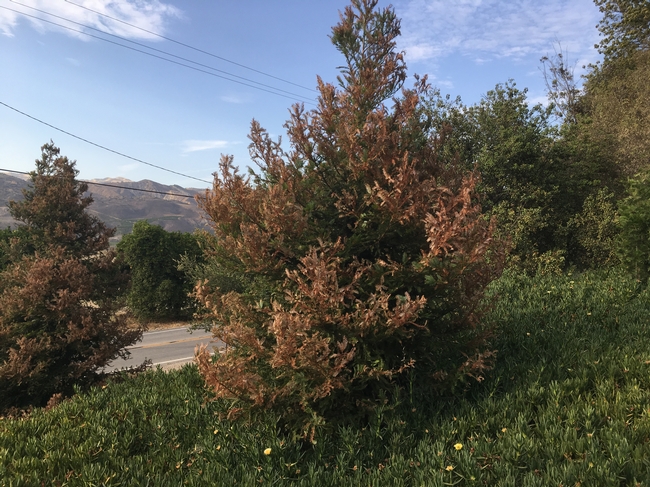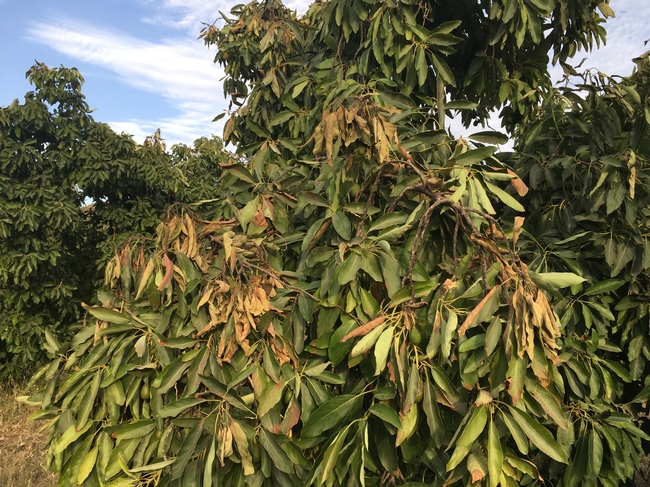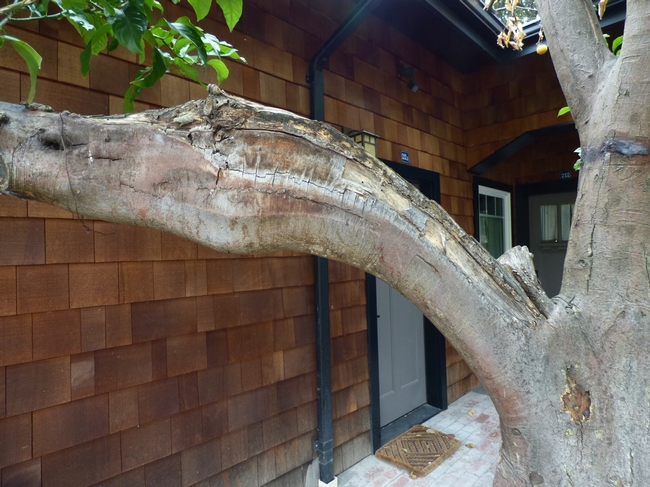- Author: Ben Faber
So, this weekend we had some hot weather and the damage from that heat is apparent in all kinds of plants. Sycamores, cottonwoods and willow in the Santa Clara River bottom look torched. Redwoods in the landscape look like a new disease has hit them.
Even old coast live oak in Ojai have been toasted. Orchards have been hit also with been hit without exception. This has been a widespread weather phenomenon like a major freeze. And the trees should be treated as if they have been freeze damaged.
http://ucanr.edu/blogs/blogcore/postdetail.cfm?postnum=12275
So, what to do with the avocados and citrus that have been hit? Well, if it's just a slight toasting, nothing. They will grow out of it. It's a setback. The growing points, the terminal buds, have been damaged and in the case of avocados those may not flower next spring. If the damage is not extensive, the whole canopy has not been damaged, then flowering should be sufficient for a good crop next year. If the whole canopy has been hit, it's likely that flowering will be minimal next year.
If the trees have lost significant portions of the canopy, though, the heat damage is not the problem, it's the sunburn damage that is going to happen that is the problem. It's the loss of the leaves that transpire and cool the tree that lead to this kind of damage that can kill small trees and lead to significant branch loss in older trees.
The leaves act like the radiator in a car. They move water through the tree and that water movement carries off the heat that accumulates in the branches and stems. When water flow stops, the bark heats up and tissue is damaged. The worst-case scenario occurs when a “renovated” tree that has been brought down to 6 feet in January and since then there has been new growth all over the tree. The heat fries that new growth and now the whole tree structure is exposed to sunburn damage.
The branches exposed to the sun need to be protected with whitewash. The whitewash needs to be WHITE, not grey. It needs to be able to reflect the sun and prevent the surface from heating. The tops of branches and the west and south sides need to be the most protected, so it often involved hand work. And it needs to be done soon after the canopy loss. That wood heats up fast and damage occurs soon after it heats up.
So what else needs to be done? No canopy, no water loss, so it's necessary to manage the water differently. With no leaves, there is no water moving from soil through the tree, so it just sits there, and the ground stays wet. Perfect conditions for root rot.
Growers who were watering their trees knowing that a heat spell was coming, did the right thing. It probably reduced the severity of the damage, but even growers who had water on before the heat and it was running during the heat have had damage. With canopy damage and loss, applied water needs to be restricted to just enough to get tree recovery without creating a wet, soggy condition. And with tree recovery, it's going to need a continually changing irrigation schedule as new growth occurs.
So now more than ever, water to the tree's growing needs. And the normal fertilizer program needs to be adjusted. There's probably sufficient nutrients in the soil from prior fertilization that nothing new needs to be applied.
And don't' prune the trees. Leave the hanging leaves there. They will help protect the tree from sunburn, but the extent of the damage is not clear. Let the tree push new growth and that will tell you sometime in the future 3-6 months, even a year from this event, when to do significant pruning.
Phlood, Phyre, Phrost, Fytophthora and Phahrenheit continue to plague our industry. It seems like we are always coping with some natural and some unnatural issues affecting agriculture. Oh, yeah and pH.
Photo: Heat singed new avocado growth.







